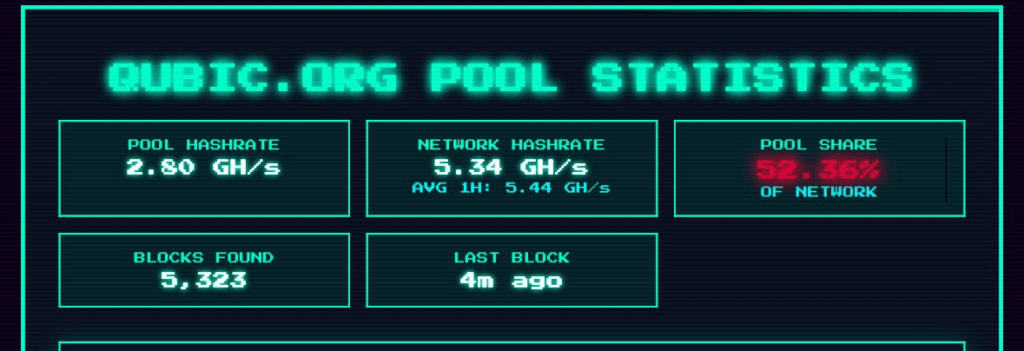Monero, the Private User Network of cryptocurrencies, is living moments of collective anguish. According to Qubic (a mining pool that promised to monopolize the monoo blocks) and its CEO, the project finally reached a maximum hashrate of 2.77 GH/s, which represents 50% of the computing power of the network.
According to him EPOCH 172 Reportcalled «The Monero Experiment«, Qubic already found a total of 4285 blocks on the network, then controlling more than half of the power of the network. July 12, he CEO of the Mining Pool assured that the 51% attack would be a reality.
It seems that Qubic has exceeded 51% to Monero. We are waiting for independent confirmations. Meanwhile, the Monero team is polishing the details of its protection against attacks of 51%. Many accused us of being sponsored by three -letter agencies to attack this anonymous currency. What do you think now, after having helped Monero prepare for their future struggles against those agencies?
Sergey Vivancheglo, leader of Qubic and co -founder of Iota.
According to an image whose source it has not been possible to specify, Qubic would specifically have 52% of the hashrate of the network.


As Cryptonoticias reported, Sergey Vivancheglo insists that the intention of the attack against Monero It is benevolent, and is part of a concept test, an experiment on the XMR work test.
However, part of the community is concerned that this concentration of power derives in the introduction of orphan blocks or the execution of double expenses in the private cryptocurrency network.
The main source of information on Monero hashrate is Minerstats. However, the data on this platform are inconsistent, and vary day by day would arbitrate.
Said inconsistency It could be a deliberate movement of the collaborators of that page to hide the total church hash.. This on the occasion of avoiding the propagation of panic in the community.
When this article is written, figures such as Charles Guillemet Or Peter Todd assumed that the attack against Monero is being successful, and that lies in full swing.
We write in cryptootics that this “experiment” uses dual economic incentives to swell the pool users base.
From the pool led by Sergey Vivancheglo it is possible to make XMR, but obtain payments for the contribution in Qubic tokens. Thus, the company that governs the pool stays with the XMR coins under its possession, to sell them.
Then, he proceeds to buy more tokens and burns them, causing the price of this cryptocurrency to rise (and potentially, that the XMR falls). It seems that these incentives of the mining pool are working, judging by the hashrate accumulated by Qubic and its rapid increase.
The 51% attack on Monero represents a historical milestone for the safety of cryptoactives. Although unusual because of how expensive, attacks like this, important cryptocurrencies, have been documented in the past.
A victim was Ethereum Classic, a network that would have experienced A reorganization of up to 14,000 blocks, putting in severe danger the immutability of its accounting record.
This time, Monero is suffering similar consequences. According to Peter Todd, the Monero block chain is already seeing reorganizations In the order of transactions.


